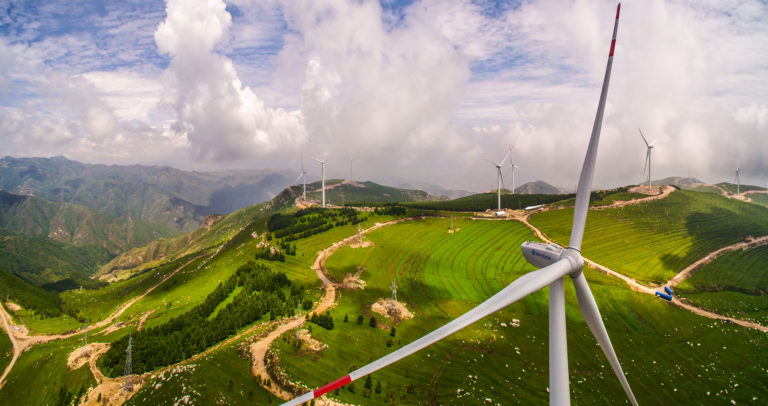China’s new growth story: Linking the 14th Five-Year Plan with the 2060 carbon neutrality pledge

Wind Farm in Guangling County, Shanxi. Photo: Hahaheditor12667, Wikimedia Commons
Download
This paper discusses how China’s low-carbon transition can act as a new driver of growth in the post-COVID-19 era. It argues that China should peak its carbon emissions during the 14th Five-Year Plan, which covers the period 2021 to 2025, and bend the emissions curve quickly, in order to achieve the 2060 carbon neutrality goal announced in September 2020. The paper concludes by outlining the core policies and strategies needed in the 14th Five-Year Plan to shape the low-carbon agenda in the near to medium term.
Main messages
- The low-carbon transition can act as a new driver of growth in China, facilitating economic upgrading to help promote the structural transformation of industries towards higher skills and technologies, and create millions of jobs in the renewable energy sector and energy efficiency.
- The low-carbon transition supports the economy through ensuring energy security by reducing dependency on fossil fuels. Reducing the use of coal would also avoid huge economic and societal costs, mostly associated with climate change and public health damage.
- China should reach its peak in carbon emissions during the 14th Five-Year Plan and bend the emissions curve quickly. The earlier that China peaks its carbon emissions, the lower the peak value is, and the more favourable it will be to realising the 2060 carbon neutrality target.
- A cap on total energy consumption needs to be set. The absolute amount of fossil energy consumption could still increase if the total energy consumption grows faster than the speed of energy transition. This calls for stricter targets on both the non-fossil fuel share and total energy consumption to be adopted in the 14th Five-Year Plan.
- Cities and local government are at the heart of China’s low-carbon agenda. The total urban population will continue to increase significantly, which could lead to significantly rising urban energy consumption. Therefore, it is vital that local governments play a central role in energy conservation and emissions reduction.
- An effective balance is needed between traditional finance and green finance to support China in achieving more sustainable urbanisation.
- Market-based incentive mechanisms are needed to motivate local governments in terms of regulating environmental protection and carbon reduction. The fiscal sharing system between central and local government should be improved to match administrative responsibilities.
- China should work with other countries in exploring new multilateral mechanisms and models of international governance, through international organisations such as the United Nations, World Health Organisation, G20 and World Trade Organisation. China’s 14th Five-Year Plan should put forward more ambitious quantified targets in aspects of energy and climate, to support its strengthened commitments and deliver a clear message that China will work closely with other countries.
- The COVID-19 pandemic has provided a window of opportunity to act through 2021. The formulation of the 14th Five-Year Plan must be focused on promoting the high-quality growth agenda for the time after COVID-19 and on shifting towards a green growth approach for ensuring more efficient and sustainable development.

